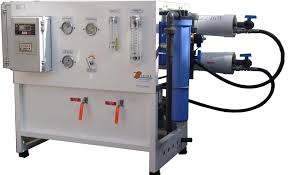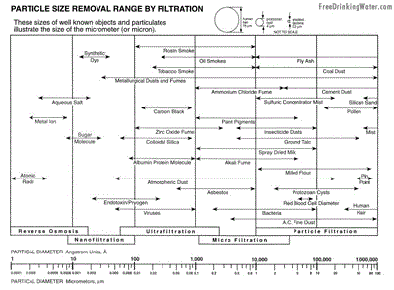Yachts & Water Maker Water
Can you drink it and can you add a Kangen Ioniser to your yachts water system.

The short answer is,yes. We have been running Kangens on a number of Superyachts in the last 2 years and they are thriving, spare the crew. We have found great improvements in crew performance and hydration during busy charter seasons and at yachting regattas. You do not need to fit the unit in the Engine room. It will go on top of the counter or under it at your dinking stations. The acidic water is great for eco/cleaning too. With 2.5 being ideal for cleaning and 4.5 great for decks, flowers and cooking. It is kind of like fitting a small coffee machine on board.
According to http://www.who.int/water_sanitation_...ineralized.pdf - the World Health Organisation concludes on pages 16-17: "demineralised water that has not been re-mineralised, or low-mineral content water - in the light of the absence or the substantial lack of essential minerals in it - is not considered ideal drinking water, and therefore, its regular consumption may not be providing adequate levels of some beneficial nutrients."
Water Maker, reverrse osmosis RO, water when used for potable purposes has to be remineralized. The human body requires a certain amount of salt to maintain electrolyte balance in the human system. Therefore it has to have TDS around 200-300 PPM, to have a feeling of quenching of thirst.
Water maker membranes remove only 98-99% of the salt from sea water if you look at the total dissolved solids coming out of your RO unit it will be between 200 and 600 ppm which is on par with most municipal water supplies. By adding the Kangen Ioniser it will structre the electrons to be more accessible to your body, so in my opinion it is most beneficial adding a Kangen unit to your water maker drinking outlet.
World Health Organization (WHO) has prescribed an acceptable limit of 500 mg/L. As per Bureau of Indian Standards (IS: 10500) guidelines, 500 mg/L is the desirable limit and 2000 mg/L is the permissible limit, which means drinking water having TDS in excess of 2000 mg/L must be rejected.
https://www.quora.com/What-is-the-acceptable-TDS-level-of-drinking-water
http://www.kentfilters.com/recent-news3.html
Taste of Water with Different TDS Concentrations
Level of TDS (milligrams per litre)
Less than 300 Excellent
300 - 600 Good
600 - 900 Fair
900 - 1,200 Poor
Above 1,200 Unacceptable
Potable water simply refers to water that is safe to drink, and the World Health Organization says that water with a total dissolved solids (TDS)concentration of 1000 parts per million (ppm) or lower is acceptable, and that anything below 600 ppm is “good” drinking water. TDS are the salts and small amounts of organic matter dissolved in seawater, which can range from about 32,000 ppm at the lower end to 38,000 ppm at the higher end depending where you’re at on the globe – 35,000 ppm is considered average (an easy way to think of ppm is as a percentage, so average seawater is about 3.5% salt and other dissolved solids, and “good” drinking water is only 0.06% salt).
3) What is Reverse Osmosis?
Watermakers utilize the process of Reverse Osmosis (RO) to produce freshwater from seawater, and you will commonly hear them referred to as “RO units.” The natural osmosis process is one where if you place freshwater on one side of a semi-permeable membrane and seawater on the other, the freshwater will move through the membrane to the seawater in an effort to achieve a balanced solution on each side. However, if you place a large amount of pressure on the seawater side, and use a membrane designed to only allow water to pass through, the reverse happens and freshwater is pushed out of the seawater, leaving behind a highly-concentrated brine solution much greater than 35,000 ppm.
For most water makers the threshold is 500 ppm, anything higher doesn’t go to the fresh water tank – and much of the time the salt content will be much lower than this. For comparison, the 2010 City of Los Angeles Annual Water Quality Report pointed to a range between 200 ppm and 600 ppm for tap water depending on the location. And, again, the World Health Organization considers anything below 1000 ppm safe and anything below 600 ppm good in terms of taste. It’s also worth mentioning that reverse osmosis removes more than just salt. Between the sea strainer, pre-filters and RO membranes, things like bacteria, viruses and other undesirables are removed (see chart from FreeDrinkingWater.com below), leaving the product water cleaner than just about anything you’re going to get from a dock hose. When combined with a Kangen machine you'll be getting the most out of all the goodness left in your water.
